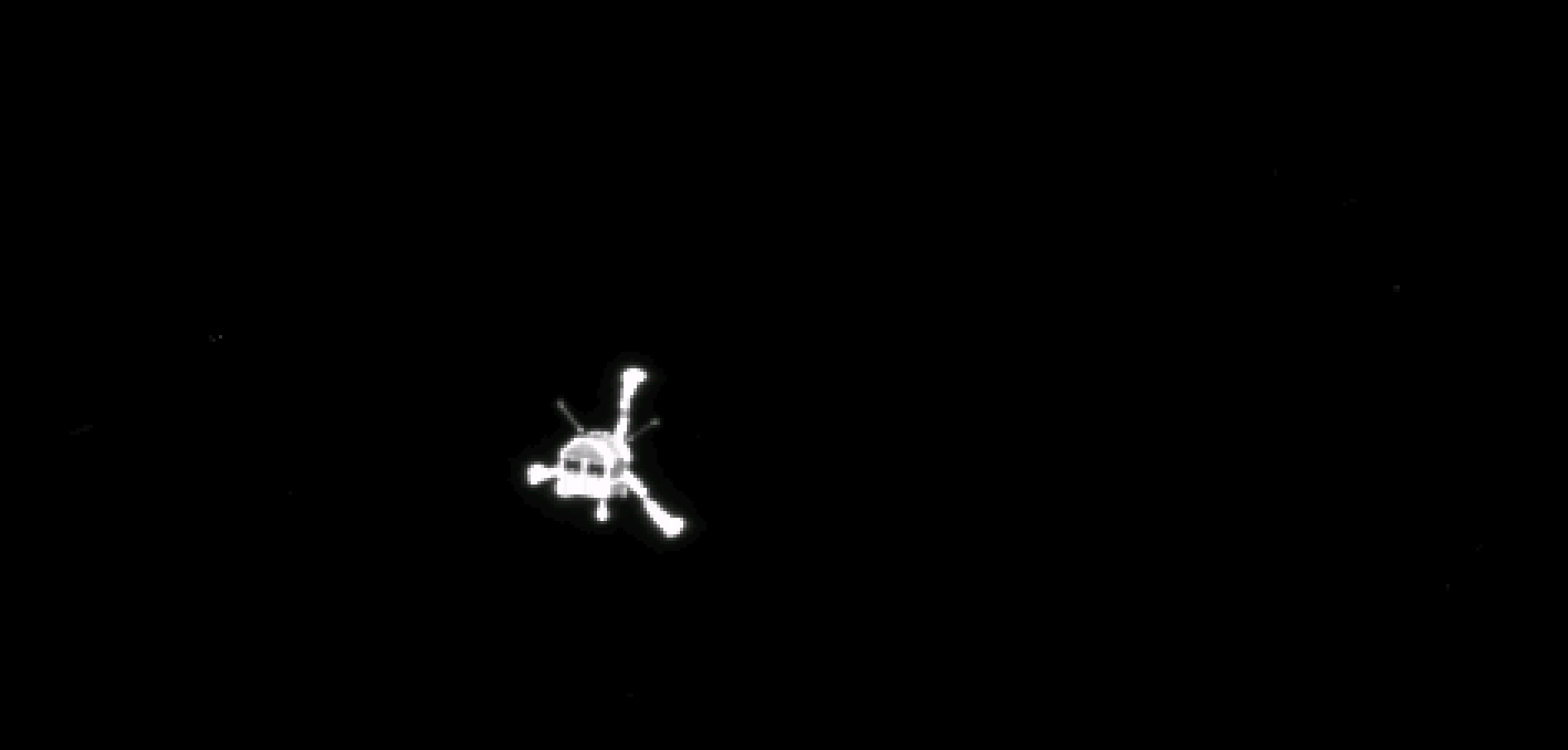Being lost in space is not so bad. In the freezing dark of the solar system's furthest reaches, you can witness epic adventures unfolding. Streamers of light two million kilometers long. Exploding slabs of ice-dust. A metallic blue-winged bird whose god-eye sees all. I'm talking of ESA's Rosetta space-craft and its miraculous OSIRIS camera tracking the progress of comet 67P. Like Rosetta, I have been zig-zagging around this black rock for some 20 months now, mesmerized by its sublimations and buried secrets. Finally this summer I got to land in ESA's webspace among a galaxy of artworks inspired by its extraordinary mission.
Rosetta has been chasing this comet for over a decade but for me it all began with the dramatic events of November 2014. Not since NASA's Apollo days can I remember a space mission capturing the world's imagination for one moment in time. It didn't feel like a scientific-body was landing this probe on a speeding comet. Rather it was we as a species who were exploring an unknown world millions of miles away through our robotic 'soul-bird'. On our television screens ESA's Philae lander was a frail white shape against black, a 'may-fly winged' metal box, plunging into the comet's underworld. A recent ESA video let us follow the lander tumbling like thistledown in the comet's low gravity, scuffing up surface dust, before latching onto a cliff-face out of Rosetta's sight. What an opening scene! The storyteller in me was immediately hooked.
Another unique thing about this mission was the way ESA narrated that story and shared the unfolding adventure with weekly updates on its blog and other social media platforms. Even the trusty lander Philae had its own Twitter account. As I began researching a poem-cycle about the adventures of Philae and Rosetta, the ESA blog was an invaluable resource. Over several years I've become quite addicted to my fix of black-and-white photos of the comet's craggy landscape, relayed back to us by Rosetta's OSIRIS camera. And I couldn't resist allusions to Egyptian mythology in ESA's naming of their space-craft but also their mapping of the comet's terrain. I became fascinated by accounts of the sun-god Ra's nightly journey's into the Egyptian underworld Duat. The analogy with Rosetta's 12 year voyage and Philae's descent let me knit the two narratives, ancient and modern, into one space-age adventure.
Initially my poem-cycle was written for a special event celebrating a high point of the ESA mission in August 2015. To Perihelion and Beyond! was a show I staged at the National Space Centre in collaboration with Leicester Astronomical Society. In a piece of pure theatre, NSC's Josh Barker threw together a DIY-comet with iron filings, dry-ice and a splash of Shiraz. Professor John Bridges of the University of Leicester explained Rosetta in the light of science's centuries-old quest to understand our own origins by studying comets. And I performed my Book of Hours 'spells' or verses to guide Philae through the underworld of comet 67P. Reviewers described it as 'one of the more unusual spoken word events in the known
universe’.
My Book of Hours took the earthly form of an Egyptian scroll but when ESA contacted me to seek permission to publish this work, I rethought that. Teaching a module on New Media to Creative Writing Students at De Montfort University gave me the idea of re-crafting this narrative into a digital story. Now the Book of Hours is an interactive adventure where the reader or 'player' finds their own pathway through the perilous landscape of comet 67P, with its fire-spitting dragons and Mummy-King. Hyperlinks will transport you to another region of the underworld or to a fragment of Egyptian mythology or to ESA's blog where you learn more about the mission. Like Ra's 'crew of gods,' you can steer the 'midnight-barge' through false-stars and ice-dust jets to make it back to the light of day. Take a trip across our solar system, if you dare. The boat embarks at: https://sites.google.com/site/philaesbookofhours/






No comments:
Post a Comment